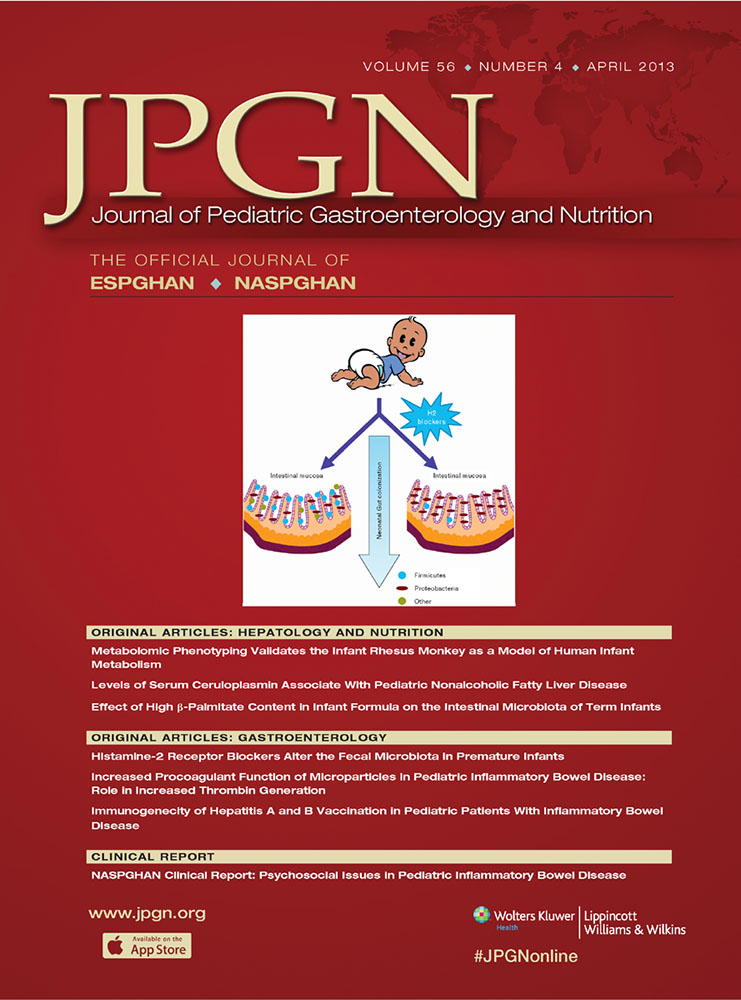Hepatic Fibrosis Persists and Progresses Despite Biochemical Improvement in Children Treated With Intravenous Fish Oil Emulsion
The authors report no conflict of interest.
ABSTRACT
Objectives:
Intestinal failure–associated liver disease (IFALD) is a multifactorial process, which can culminate in cirrhosis and need for transplantation. Fish oil–based lipid emulsions (FOE) reportedly reverse hyperbilirubinemia, but there are little data on their effect on the histopathology of IFALD.
Methods:
We blindly examined sequential liver biopsy data on 6 children receiving FOE, with scoring of cholestasis, inflammation, fibrosis, and ductal proliferation based on standardized systems. This information was correlated with biochemical and clinical data to determine any possible relations between biologic and histologic improvement.
Results:
The median gestational age was 35 weeks, median birth weight 2064 g, and common most reason for intestinal loss was gastroschisis (5/6 children). Median intestinal length was 26 cm beyond the ligament of Treitz and most children had roughly 2 of 3 of their colonic length. It was observed that although hyperbilirubinemia reversed and hepatic synthetic function was preserved across timepoints, fibrosis was persistent in 2 cases, progressive in 3 cases, and regressed in only 1. It remained severe (grade 2 or higher) in 5 of 6 children at last biopsy. Histologic findings of cholestasis improved in all patients and inflammation improved in 5 of 6 children. There were mixed effects on ductal proliferation and steatosis.
Conclusions:
In children treated with FOE, reversal of hyperbilirubinemia is not reflected by a similar histologic regression of fibrosis at the timepoints studied. Children with IFALD should have active ongoing treatment and be considered for early referral to an Intestinal Failure Program even with a normalized bilirubin.




